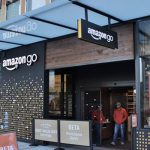
How The Online Ecommerce Model Is Disrupting CPG
In modern parlance, an industry-wide disruption isn’t inherently a negative thing; in fact, it’s often exactly what’s needed to raise standards, drive innovation, and move past outdated views of how certain businesses should function.
Just as it has disrupted many other elements of retail, it’s inarguably the case that the online ecommerce model (so greatly polished by juggernauts like Amazon) is rapidly changing how we approach the sale of Consumer Packaged Goods (CPG).
CPG were among the last holdouts from the old brick-and-mortar retail standard, but the times keep moving on. Let’s look at specifically how the CPG sector is changing.
Offline Retail Is Getting Connected
If you look to the top of this piece, you’ll see an Amazon Go store, described as “a new kind of store with no checkout required”. Essentially, you venture into the store, pluck the items you want from the shelves, and walk out; along the way, your Amazon account is identified, the items you take are monitored, and you are charged accordingly. This kind of store is still very much in the prototype stage, as the potential problems abound. What if the internet connection goes down? How will theft be prevented? How will retail jobs be affected, retained, or adapted? Will people be willing to have everything they buy from a store be connected with an online account? But there’s every reason to think it will become standard sooner or later, especially when they begin to financially incentivize it. Retail will be of the ‘order online, collect in store’ variety across the board, and consumers will have more options than ever before.3Competition is Heating Up
The CPG sector has long been dominated by a select group of huge brands— those with the funds and distribution networks to get their goods in every major store and saturate promotional avenues to the extent that consumers would automatically trust them. For examples, think of Coca-Cola, Heinz, or Hostess. There has always been room for store-brand and locally-sourced goods alongside them on shelves, but such goods have rarely had any realistic hope of being truly competitive with them. Now, things have changed. These days, several factors combine to make it drastically more achievable to compete with (and in some cases outperform) top brands:- Social media makes steady growth possible on little to no marketing budget.
- Without TV, radio or banner ads, growth used to be all but impossible. Today, word-of-mouth recommendations abound through social media, and a brand that masters the various platforms can drive sales without much of a budget.
- Technology has greatly lowered the investment required to sell goods.
- You don’t need a physical store; you can operate entirely online. You don’t need experience; you can learn as you go. Comprehensive ecommerce solutions not only make it quick and cheap to build online stores— they can also help you get products built. And it’s even possible to sell without having a store.
- Meeting demand for options requires flexibility and maneuverability.
- The larger the ship, the longer it takes to change direction. The agile nature of small companies allows them to rapidly adopt new tactics to suit shifting consumer preferences and trends.
